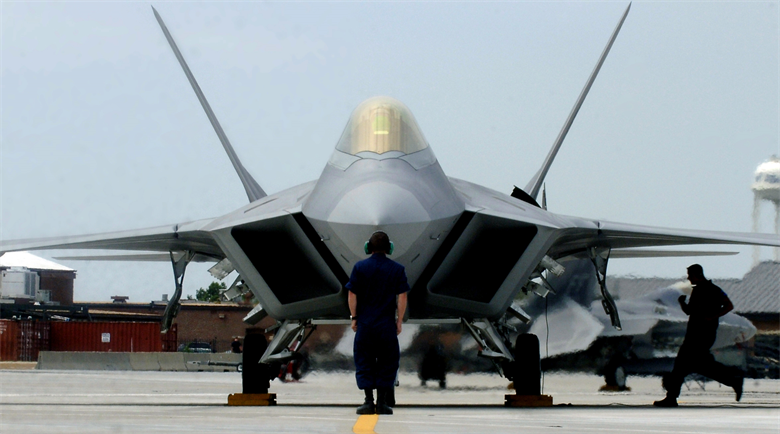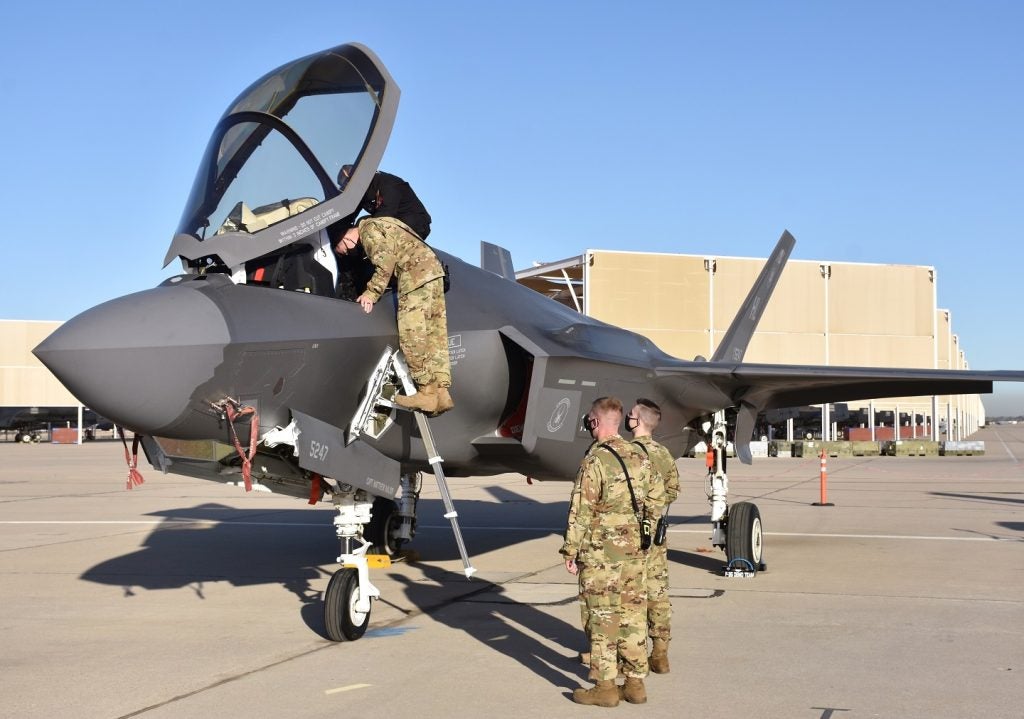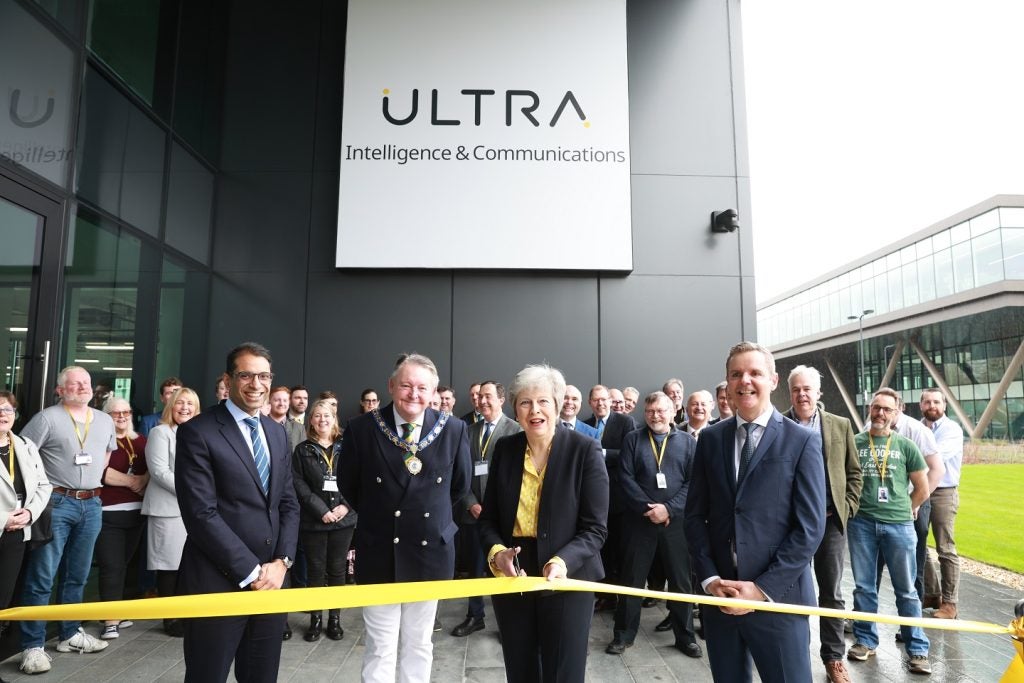
While the concept of multi-domain warfare is still in its formative years – as with many things in defence, you can’t be absolutely certain how far it has come – it is considered the next frontier by many, and its requirements are already shaping the development of the next generation of equipment.
“Multi-domain operations allows the warfighter to act and react to changing situations by using all domains – air, land, sea, space and cyber – to present dilemmas to an adversary at an overwhelming pace,” explains Kimberly Ponders, head of business development at Lockheed Martin’s C4ISR division.
Both interest and investment in the multi-domain space have grown rapidly in recent years.
The US, for instance, sees this type of warfare as crucial to its future security and any success in conflict. Speaking at the Brookings Institution at the beginning of the year, Air Force General James M. Holmes said the US Army and Air Force were collaborating on working out how to fight a multi-domain battle.
“We have developed 13 initiatives… that the air force and army can work together on,” the commander of the Air Combat Command said. ”Our goal is to try to find a way that the joint force, working together, can hold the initiative. “In this world where both sides can see everything and know everything… the side that wins will be the side that can command the initiative by driving an optempo that the other side can’t keep up with.”
The requirements shaping the multi-domain space
Commercial players are already working hard to get their technology noticed and, ultimately, procured. Lockheed is among those companies investing heavily in multi-domain capabilities.
How well do you really know your competitors?
Access the most comprehensive Company Profiles on the market, powered by GlobalData. Save hours of research. Gain competitive edge.

Thank you!
Your download email will arrive shortly
Not ready to buy yet? Download a free sample
We are confident about the unique quality of our Company Profiles. However, we want you to make the most beneficial decision for your business, so we offer a free sample that you can download by submitting the below form
By GlobalData“Lockheed Martin continues to invest in transformational technologies that harness the complexity of the multi-domain battle by focusing on elements and processes central to complex mission planning and dynamic execution,” Ponders says.
“Critical to operating in the future battlespace will be seamless integration and interoperability across a resilient and rapidly enhanced system of systems,” she adds. “We can no longer assume air superiority with near-peer adversaries and must adapt to operating in both permissive and contested environments. Prevailing in future conflicts requires the ability to understand situations faster than our adversaries.”
True multi-domain operations will require technologies that can combine sensing, sharing, and action on the same platform, creating a distributed command and control environment. Ponders admits that doing this across all platforms and forces is a challenge – a huge one, but not unsurmountable.
“Speed in all areas – acquisition and upgrades, innovation and change, and information sharing – is critical for a successful multi-domain force”, she adds. “Active collaboration among industry, academia and defence is vital, too.
Balancing the potential and vulnerabilities of connected systems
So how do you go about developing technology solutions for a set of requirements that is only just evolving?
“Lockheed Martin places great emphasis on building modular, scalable, open architectures for large scale system-of-systems,” Ponders says. “We are working to link traditionally stove-piped systems and, in order to support the vision of the modern battlespace, developing new technologies with the capacity to expand or flex to ever-changing mission needs.”
The company has previously said an open architecture model is key to ensuring this concept can become a reality, something it is working on.
However, with increased reliance on connected systems and growing sophistication among potential adversaries, the excitement surrounding the possibilities must be matched by caution against unintended consequences.
“Security issues will be of primary importance in both the development of new systems, which must remain resilient while being connected to one or more networks, and in the continued deployment of legacy systems, which will require major improvements to withstand increasingly sophisticated attacks,” Ponders says. Those concerns are being addressed but complacency will never be an option.
The Internet of Things (IoT) is another factor. Although it has enabled much of this new technology development, it also opens the door to vulnerabilities. “The IoT has provided hundreds, if not thousands, of ways to exploit vulnerabilities in communications, security, and infrastructure,” Ponders explains. “Today’s battlefield is an information battlefield, putting cyber at the forefront of both offensive and defensive considerations. Future warfare will inevitably include the IoT, a non-traditional consideration that has propelled the multi-domain concept.”
Establishing a common approach
Of course developing the technology is only the start – effective integration will be, perhaps, the bigger challenge.
The US Air Force’s Multi-Domain Command and Control (MDC2) initiative has been a constant consideration for industry in its development of enabling technologies.
Jack Blackhurst, director of the US Air Force Strategic Development Planning and Experimentation Office, has said: “The air force is aggressively pursuing a path toward strategic agility in our capability development activities. We are transforming into an agile enterprise to maintain and increase our edge in the emerging environment and leverage the full innovative potential in all our airmen.”
As part of that, MDC2 is a system that will allow all strands of the armed forces to communicate effectively, taking into account the facets of each service along with allies and partners, creating an avenue for real-time, effective cooperation.
Meanwhile Lockheed has been hosting table top exercises focused on integrating the command and control mission planning process across the air, space, and cyber domains since April 2017.
Through these wargames, the company and its military partners have created recommendations for developing a common lexicon, synchronising effects across domains, organising distributed planning teams, and using tools and decision aids for visualisation and dynamic, integrated planning. The wargames are as much about understanding the concept and how technology can be utilised as they are about learning how to control it.
Buzzword or future reality?
It’s clear we are only at the very beginning of this intriguing new era. Some argue that as with political administrations, military buzzwords and even initiatives come and go. But the multi-domain effort is here to stay.
“Critical to operating in the future battlespace will be seamless integration and interoperability across a resilient and rapidly enhanced network, which will be enabled by connecting disparate systems and platforms across all domains,” says Ponders. And there’s more to come, she says.
“By exploring concepts like machine learning, open architecture, automation, artificial intelligence and pattern recognition, Lockheed Martin is evolving ways to allow disparate systems to connect, share, and learn.
“Information has always been power, but the speed and volume of data available to the warfighter today are unprecedented. Multi-domain operations is predicated on reducing the ‘data to decision’ cycle. It’s all about getting the right data to the right place at the right time with the right security protections so that actors at all levels can make informed decisions at speed.”
Ponder says by continuing with wargames, investing in technology and working with academia and industry, the vision of seamlessly connected systems across domains can be realised.






